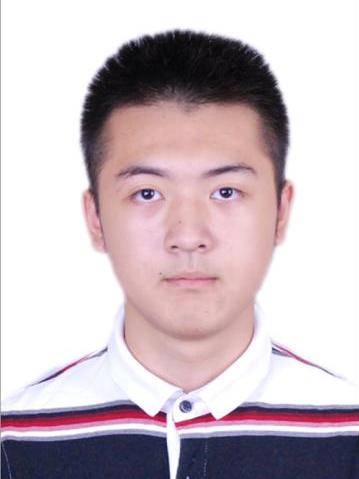Research
Working Papers
Macroeconomics:
How does AI affect society in a human-AI mixed environment? (With Bo Li)
Abstract: Nowadays, with the advance of web and internet technology, Artificial Intelligence (AI)
has significantly improved productivity in production and become an integral part of labor market.
Motivated by this, our study empirically examines the impact of AI on the economy.
We construct a multi-agent economic environment that incorporates both human and AI agents.
A key distinction between AI and human agents lies in the seamless sharing of skills among AI agents,
while humans continue to develop their own skills.
Furthermore, we thoroughly discussed the implications of AI ownership on social welfare.
We employ the Proximal Policy Optimization (PPO) algorithm to train all agents in the environment.
Through our experiments, we uncover several important findings:
Firstly, the introduction of AI results in a substantial increase in overall productivity.
The presence of AI leads to a crowding-out effect, replacing humans in the production
Secondly, AI's value creation heavily relies on the attention it garners,
and an open AI market/technology notably boosts its progress and worth.
Companies with diverse products and AI tech display greater influence in this trend.
Furthermore, we highlight the significance that implementing a proper tax policy enables the effective utilization
of the productivity advantages brought by AI while mitigating its negative impact.
Overall, our work provides new insights on the complex interactions between humans and AI in economic activities.
[Link to Paper/Draft - Optional]
Deep Adversarial Bellman Solver for High-Dimensional Heterogeneous Agent Models. (With Bo Li)
Abstract: Solving high-dimensional Heterogeneous Agent Models (HAMs) is challenged by the curse of dimensionality and limitations of existing methods.
We introduce Deep Adversarial Bellman Solver (DABS), a unified deep learning solver directly targeting the Bellman equation
using an adversarial framework inspired by Generative Adversarial Networks (GAN).
Key innovations ensuring robustness and efficiency include stable multi-shock expectation estimation, constrained data simulation,
implicit general equilibrium handling, and experience replay. We validate DABS on the Krusell-Smith model, extensions with continuous/discrete
labor supply, and Overlapping Generations (OLG) models, demonstrating its effectiveness, robustness, and broad applicability with the same core algorithm.
Our method yields accurate, smooth policy functions, shows improved stability and tail-behavior compared to benchmarks, and provides a powerful,
general, and computationally feasible approach for complex HAMs
[Link to Paper/Draft - Optional]
Heterogeneity Models Introduce Time-varying Risk Aversion Affected by Economic Shocks. (With Bo Li)
Abstract: We introduce a time-varying risk aversion to the Aiyagari model and link the time-varying risk aversion to the heterogenous shocks.
We also introduce different types of individuals who change their risk aversion differently by shocks.
The new model enriches the variety of individual heterogeneity without changing the random shocks and fits better gini coefficients for wealth.
And we find that the new model obtains the above effect through two mechanisms: 1) more parameter dimensions 2) influence the saving behavior.
[Link to Paper/Draft - Optional]
Other Fields:
ASSET PRICING IN CHINA’S STOCK MARKET. (With Shuaiyu Jiang)
Abstract: This paper uses traditional machine learning methods and deep neural networks
based on both firm-specific characteristics and macroeconomic variables to price
China's A-share stock market. The main contributions are as follows: We give the
stochastic discount factor a flexible form and compare different models' performances.
Since the Chinese government adopts various policies to maintain financial stability,
we borrow the idea from generative adversarial network to find the
true SDF by selecting moment condition that minimizes return volatility. Additionally,
we compare this model's performance with Chen's work and find that
this model can obtain higher Sharpe ratio and R Square
2
[Link to Paper/Draft - Optional]
Forecasting crude oil spot prices using a Transformer-BiLSTM architecture with NRBO-based hyperpamameter optimization. (With Wenhui Huang)
Abstract: A future vision of global crude oil markets is crucial for market participants and policymakers.
However, making an accurate prediction of crude
oil prices is always challenging, due to the difficulty in extracting both global
and local information from historical price data and optimizing hyperparameter settings of the forecasting framework. In this research, a TransformerBiLSTM-NRBO forecasting model architecture is proposed to overcome these
challenges. First, a Transformer-based feature extraction module is adopted
to enhance the capture of global information in the forecasting framework.
Then, a BiLSTM-based feature extraction module is used to enhance the
capture of local information. Finally, an NRBO algorithm is adopted to
optimize the key hyperparameter settings of the previous modules. Experiments conducted on daily Bent and WTI crude oil spot prices from 2013
to 2024 illustrate the robust and outstanding forecasting capability of the
proposed method. Research limitations and future directions are given.
[Link to Paper/Draft - Optional]
Working in Progress
Policy Reform under the Urban Basic Pension System - Based on a Heterogeneous Agent Model. (With Bo Li and Song Zeng)
